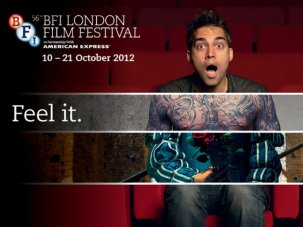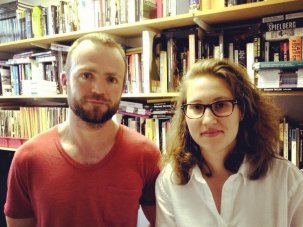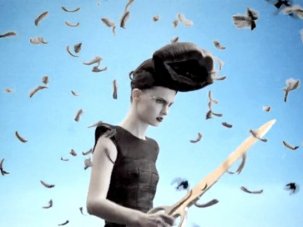Web exclusive
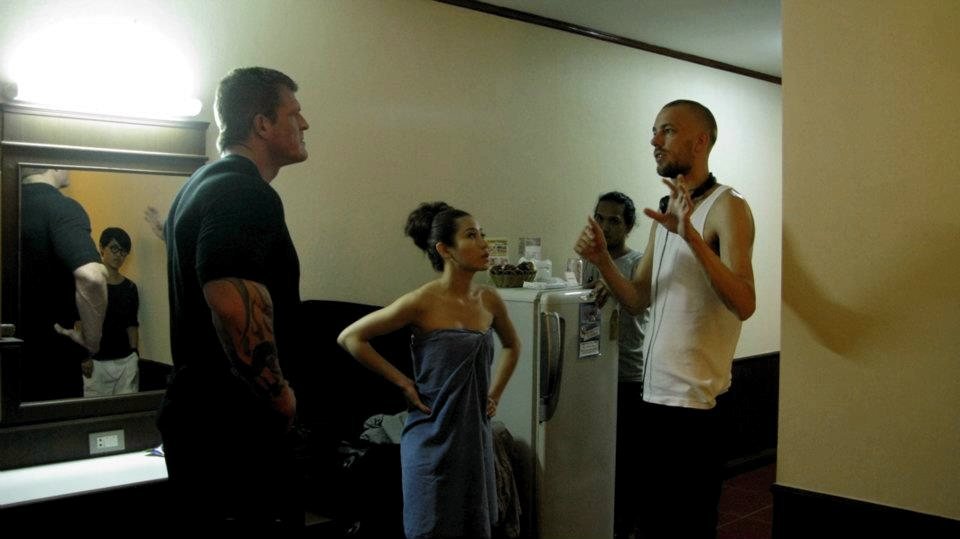
Mads Matthisen directing his two leads on the set of Teddy Bear
A familiar critical take on film festivals is that they thrive on serendipitous encounters. Often this manifests in the melding of themes, subjects and motifs that connect films in unexpected ways – a trait emphasised in this year’s largely successful marshalling of the London Film Festival programme into thematic strands. But occasionally there is simply coincidence.
One example is the connection between two debut festival features that both have their origins in short films made in 2007. Mads Matthiesen’s Danish film Teddy Bear is developed from his short Dennis, and tells the dryly funny tale of a shy thirty-something bodybuilder desperate to move away from his domineering mother. Scott Graham’s Shell is a reworking of his earlier short of the same name, about a teenager stuck living with and working for her father in a remote petrol station in the Scottish highlands. Both films are about the struggle of their repressed main characters to break away from an idolised parent.
After a relatively dry couple of years for short-film financing (in the UK, at least), prospects are looking richer (for live-action films, at least). The BFI and Lighthouse’s recent backing of 16 new shorts with budgets up to £50,000 suggests renewed support for the form and recognition of its vital place in the development of new filmmakers. Following their successful LFF premieres I caught up with the writer-directors of Teddy Bear and Shell, separately, to talk about their roots in short film and the move to features.
Teddy Bear
Mads Matthiesen [homepage] made his debut feature Teddy Bear (2012) after a run of five celebrated short films, including Dennis in 2007:
Dylan Cave: Your original short, Dennis, depended on a strong central performance from Kim Kold, then in his first role. How did the idea and character emerge?
Mads Matthiesen: I had an idea about a guy in his thirties, a little nerdy and introverted, who was still living with his mum. Dennis (the eponymous character) was like that but we discussed the idea that he should also be a bodybuilder. I could see the psychological trait in him: he is dominated by his mother and has a lost father figure so he builds his body to show the world “I’m here, I exist, I’m okay.”
It was surprising but it worked. But I didn’t know if I could find any actors who could do it. The bodybuilding community is very small in Denmark and I didn’t want to fake it. I needed to find a bodybuilder who could act and at the last casting Kim Kold came in. At that point I knew I could do the short.
How did you and co-writer Martin Zandvliet develop the short into the feature?
I finished film school but didn’t feel finished with Dennis and his mother. Martin came up with an idea of sending him to Thailand on a quest for love – it’s a crazy place to send Dennis, a very insecure man.
The first thing we did was to go down there to research. We booked a hotel and arrived like Dennis would, without knowing anything. When we got there I was convinced that it would work for the film. But I didn’t want to do it if Kim couldn’t, so I asked him very early on if he was up for it.
I had some convincing to do [to get the film financed] because it’s a strong main part – he’s in every scene – but he’d had a number of other parts since we made Dennis, and they’d given him more experience. Also, the actress who plays Dennis’ mother (Elsebeth Steentoft) is an experienced actress. She was the backbone in their screen relationship, and that helped Kim.
Did it help that you had the short film to show the financiers?
It was definitely a plus, to show them the basics and that Kim could act. But a big minus was that people felt they’d already seen the film. We got some ‘no’s because of that. Doing a feature version of an existing short is hard because you need to take the film a step further. You need to find something new and inspiring in the material, make it alive again.
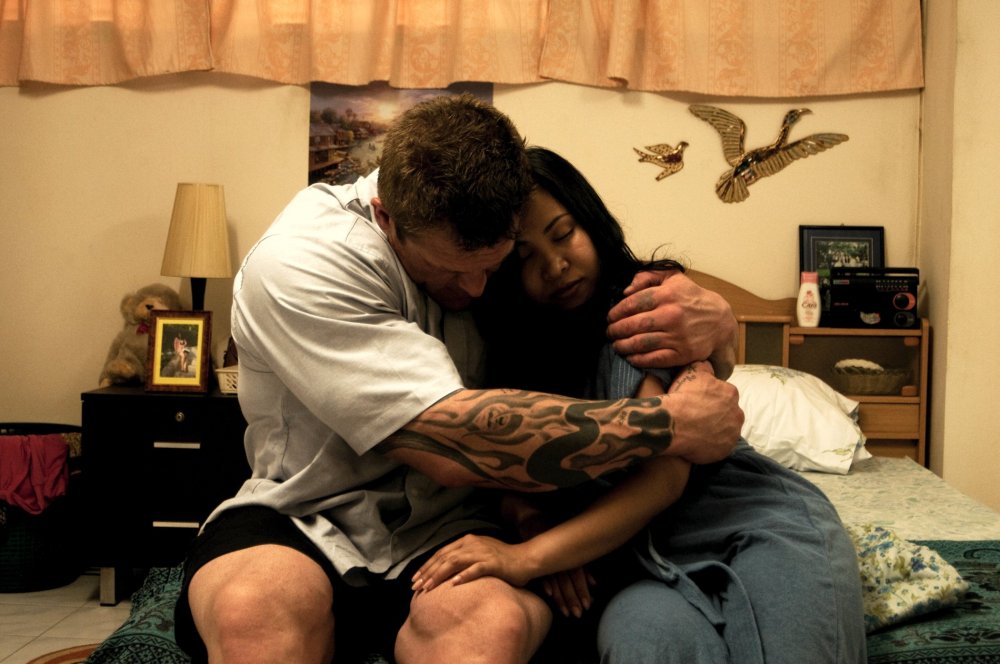
Teddy Bear
The way you’ve approached the journey from short to feature is unusual. Many filmmakers literally remake their short, expanding on the central ideas and key scenes. Teddy Bear feels like it follows on from Dennis, as if the short were one moment in the character’s life and the feature returns to him a couple of years later.
That’s how I looked at it when doing it: it’s what happens after the short – ‘Dennis, Part II’. I had this rule that I didn’t want to repeat any scenes, I only wanted the set-up to be the same. The only repetition is the line “You’re just like your father”, but even then I think we make more of the father in the short than the feature.
The basic premise of the short remains in the feature but everything is evolved. A striking moment is when an amateur Thai bodybuilder recognises Dennis. We suddenly learn he’s held in great esteem among the bodybuilding community: he’s internationally recognised.
We started research in the Thai bodybuilder community, which was pretty wide but people know each other. If you’re successful enough then others will recognise you.
Having now made the feature, what are your feelings about the original short?
I have a good feeling about Dennis, but Teddy Bear is the movie to watch. They’re two different films made at different times. Doing the short was so fast. It was a crazy idea but the first brick for the feature. I’m happy I did it or I wouldn’t have done Teddy Bear.
Shell
Scott Graham’s feature debut Shell (2012) follows three well-received shorts: Born to Run (2006), Shell (2007) and Native Son (2010) [video]. His long-term producer David Smith also joined our interview.
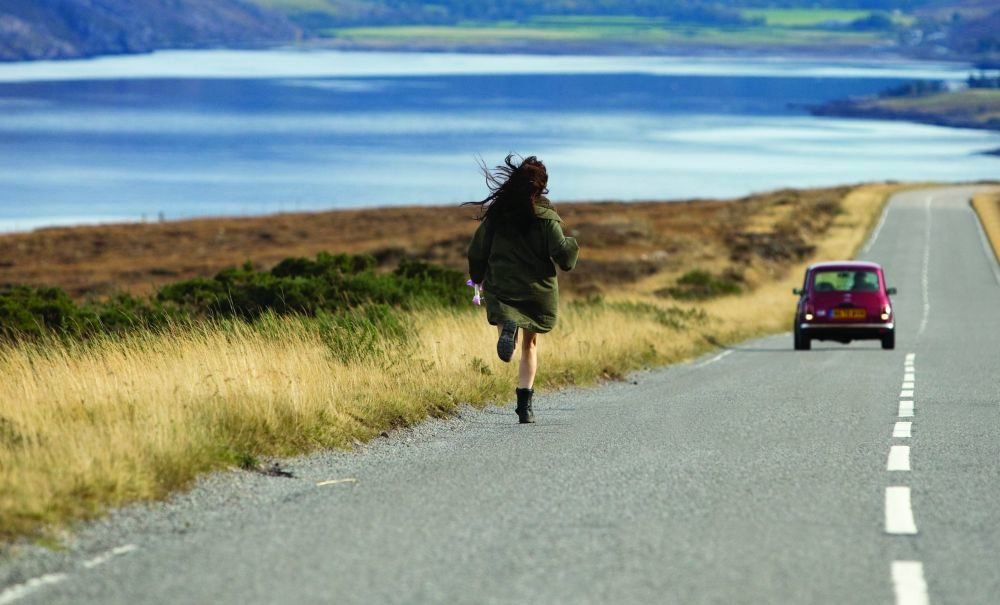
Shell (the short)
Your short Native Son took inspiration from a 19th-century painting by Jules Breton – The Weeders, which depicts labourers in a potato field – and ended up being about a loner who becomes a necrophiliac. Were there similar elements of inspiration for Shell?
Scott Graham: I don’t think there was one single image, except that prior to making the short I was driving between the north of Scotland, where I’m from, and Glasgow. I’d pass places like the petrol station in Shell, and I thought about someone tied to a location like that. You have time for ideas to evolve when you’re driving. So it wasn’t so much an image that I’d found, more of an experience that I had.
How did the short grow into the feature?
SG: Although a life like Shell’s is very limiting, it’s extremely rich for a writer because there are so many ways you can go with the story. I think one of the reasons why the short of Shell is so different from the feature is that I explored one moment in the short film and when we were editing it, I realised I hadn’t really explored what my original idea was. I was developing as a filmmaker – I’d never gone to film school, but I was learning as I was working.
Do you think you had to make Native Son before you could develop Shell as a feature?
SG: The feature has far more in common with Native Son than with the short Shell. I personally changed a lot after the Shell short and went through a period of loneliness. It was during that period that I made Native Son and wrote Shell – a lot of that went into the feature. Native Son gave me the courage to write what was going on within me at the time. I don’t think I really did that with the short of Shell.
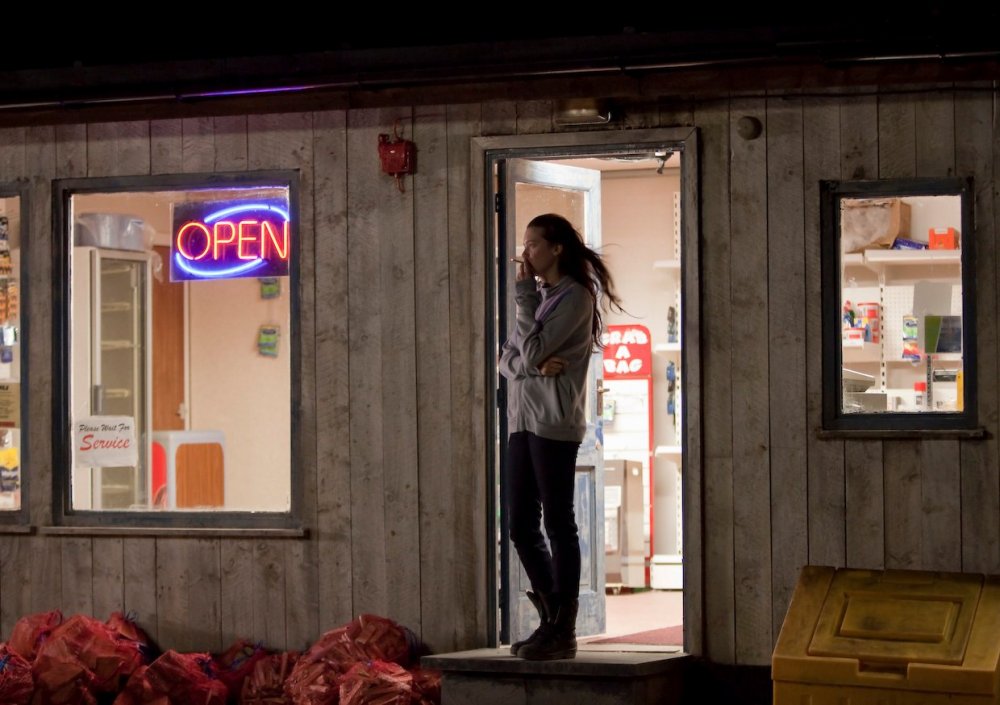
Shell (the feature)
There are scenes in the film that are adapted from the short – I’m thinking particularly of the one where the salesman, Hugh, offers Shell a new pair of jeans. There’s more at play in the feature version. Paul Higgins’ salesman in the short is predatory and lustful, whereas Michael Smiley’s portrayal of the same character is a lot more sympathetic – his advances to Shell comes from his own sense of loneliness. In handling a scene like this did you feel that you had to distance yourself from the same moments in the short?
SG: I didn’t consciously put the short to one side because I didn’t really need to. Everything about that world and that character, Hugh, felt so different to the short.
David Smith: In that scene in the short, the threat to Shell from the salesman is quite crude. With the feature the interaction is far more truthful and more powerful as a result. But we didn’t really think about the short when we were filming the feature.
Even with scenes that are prominent in both films?
SG: I think the things that are in both films hung around in me and found their way into the feature but the contexts were quite different. Making Native Son in between gave me a real distance from the short. I could have very self-consciously had nothing at all from the short in the feature but I allowed certain things that would still work in the feature to come through. I had a sense that these characters stood on their own. They didn’t necessarily come from the short; they lived in their own right.
What are your feelings looking back at the original short now? Does your achievement with the feature make you think back on it problematically?
DS: When we were making the short we had this practical realisation that we could make a film in an isolated place because we were only shooting one location. That transferred to the feature in that we were able to consider shooting as far north as we did because we were in one location. Logistically it was all quite similar but felt very different.
There are positives and negatives in making short films. We were quite thoughtful about the work that they did for us after we’d made them. I see lots of filmmakers who make a short film and they spend a lot of time getting it into festivals and travelling around getting it celebrated. I think that that takes a lot of energy out of the artistic process.
Our films didn’t do big circuits. They picked up very strategic slots (Native Son premiered in the 2010 Cannes Critics Week) and got on the radar of people who could help us make a feature. All those short films led to longer ones. The aim was for the shorts to achieve their goals and then to make Shell.d
← Previous: Blow hard – Slavoj Žižek, sans handkerchief
-
The Digital Edition and Archive quick link
Log in here to your digital edition and archive subscription, take a look at the packages on offer and buy a subscription.




